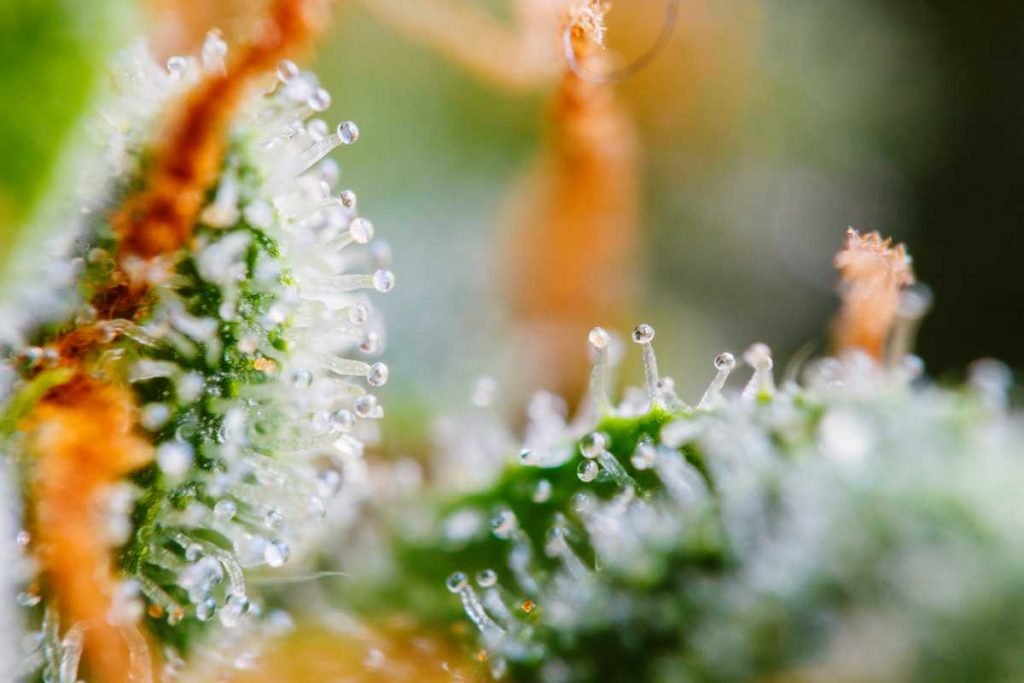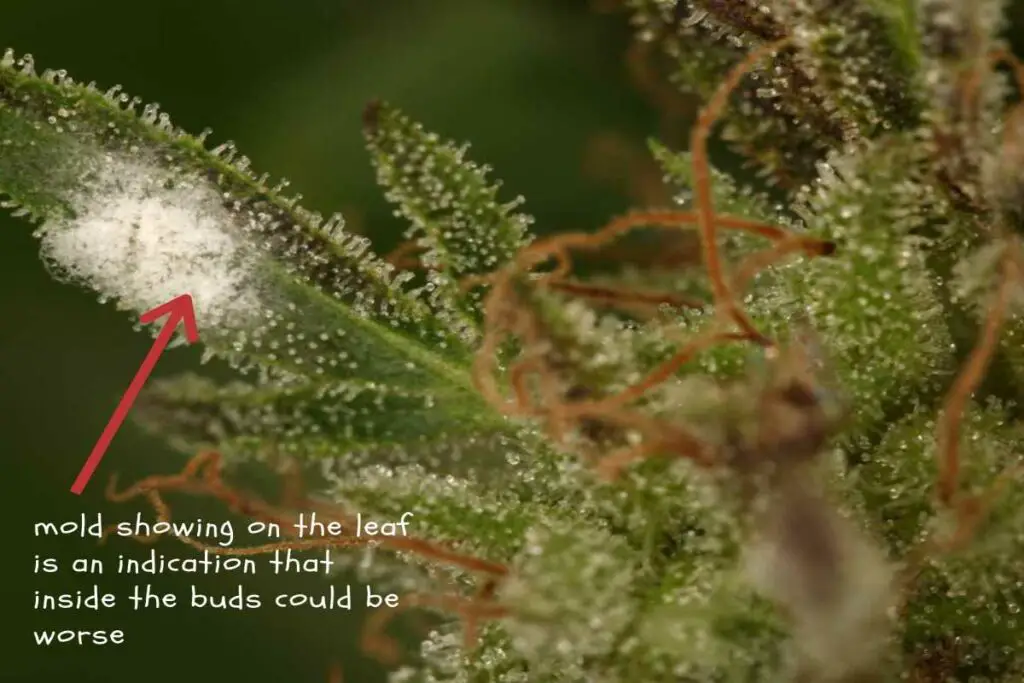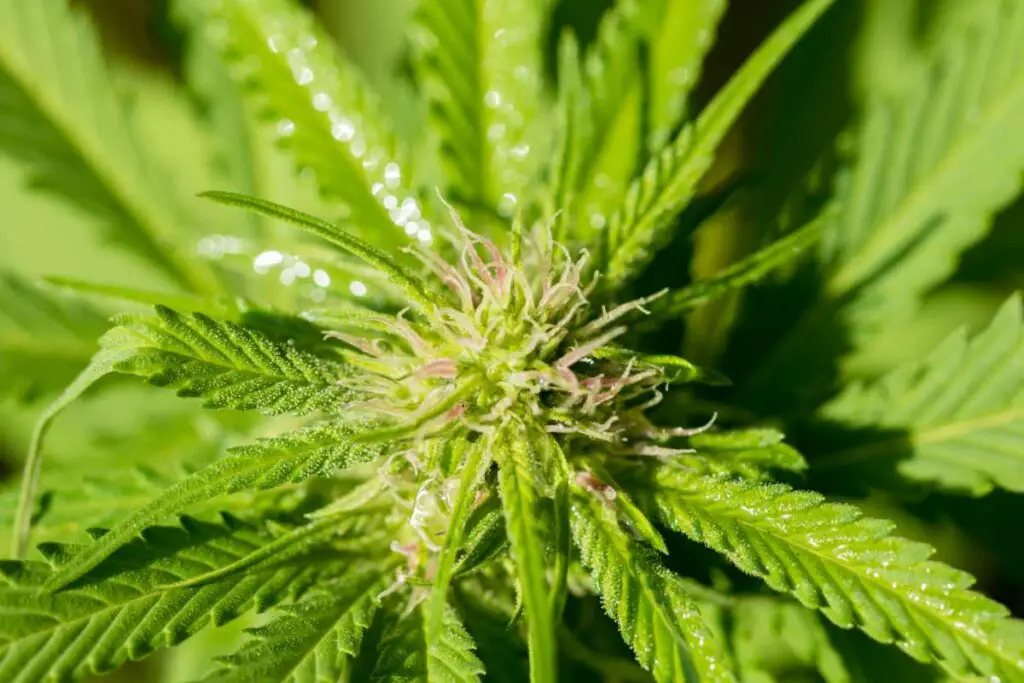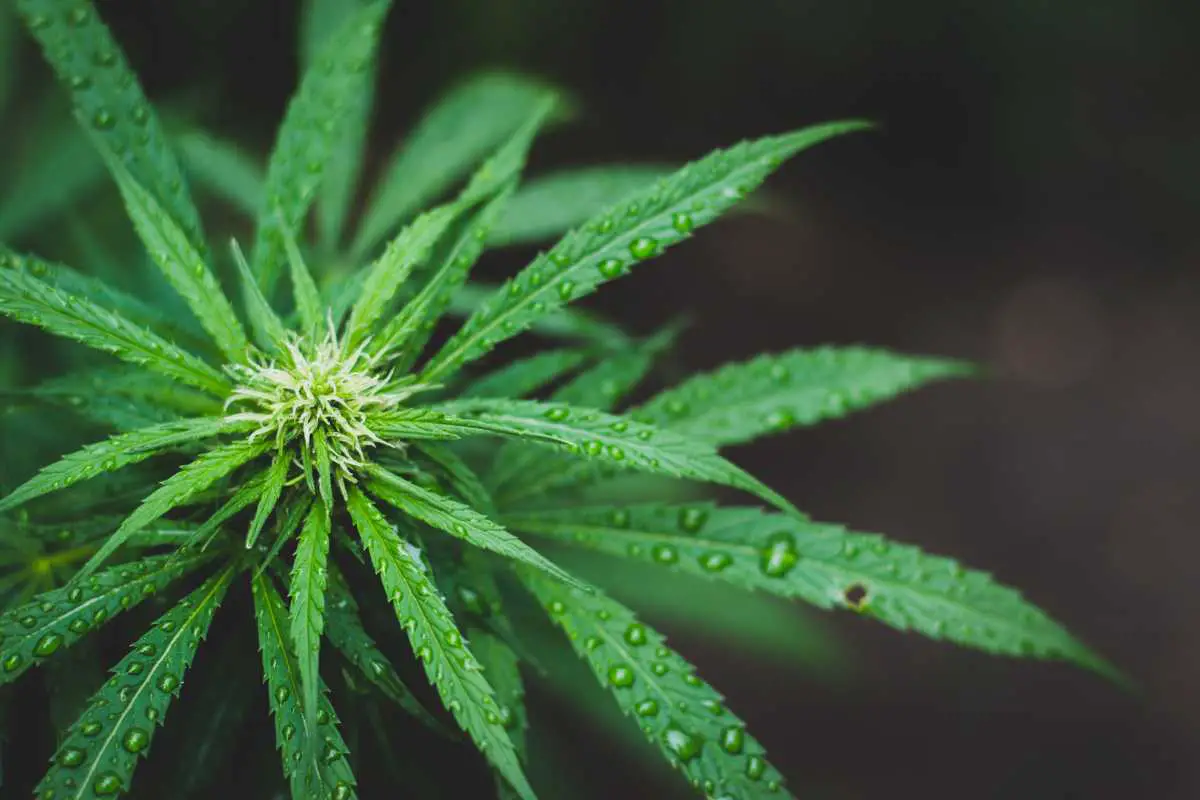Rain is a weather hazard that keeps outdoor cannabis growers up at night. Growers are very intentional about the quality of weed they want to harvest. If the rain reduces the potency of cannabis, they will do anything to protect their plants from a heavy downpour.
I’ve moved a plant back to the garage because I feared a rainstorm. Growing pot is an investment, and like anything else you put my money on, protect your plants jealously.
When it pours down heavily, you wonder if the heavy rain will wash away all the juicy resin glands and reduce the potency of your buds.
In this article, we’ll explore the effects of rain on cannabis buds and how you can mitigate the problems, if any.
Does Rain Lower The Potency Of Cannabis?
The rain reduces the potency of cannabis, but not in the manner that most people think. Hard-pounding, stormy rain can knock off the trichomes on the top colas, leaving them less concentrated on essential cannabinoids, thus reducing their potency.
Other than physical damage to the trichomes, the rain affects your buds in more than one way;
Heavy Rains Can and Nutrient Deficiencies
Heavy rains can hurt your cannabis plants in more than one way. Prolonged rains can cause nutrient runoff and leaching. Nutrient runoff and leaching will starve your plants of essential nutrients like potassium, phosphorous, and nitrogen, reducing the overall quality and potency of your harvest.
Also, rainwater may alter the pH in the soil, inhibiting the plant’s ability to absorb the minerals.
Heavy Rains Can Cause Root Rot
Prolonged rains will submerge the plant’s roots in water, inhibiting the flow of air of oxygen to the roots and causing root rot. Waterlogged plants will suffer all the problems you would if you overwater your plants, except outdoors, you’re not much in control of how long the water keeps pouring.
The lack of oxygen supply to the roots will also affect the plant’s metabolic functions, halting its growth and development.

Most people think that the loss of potency is due to the rainwater diluting the trichomes.
That’s laughable. Lol!
Trichomes aren’t water-soluble, so if it rains mildly and the trichomes aren’t knocked off the flowers, the rain won’t affect them.
The resin glands are most vulnerable in the last stages of flowering because they become bigger and more exposed. Also, at flowering, the plant might not get enough time to replace the lost trichomes lost during the hard-pouring rain.
Once you have spotted those clear trichomes burgeoning, protect your plants from a heavy downpour.
The bigger they get, the riskier because their surface area broadens, thus more exposure to the raindrops.
The rain can also cost you an entire harvest if you don’t attend to your plants after a heavy downpour.
The water trapped in the foliage creates a highly humid environment that encourages the growth of mold.
Thus, with a heavy downpour, the buds might become less potent, and your harvest can also reduce considerably if the mold problem isn’t contained.
Why The Rainy Days Are Troublesome To Cannabis Plants
Though rain is a resource for outdoor plants, it can affect your plant’s development adversely.
During the vegetative stage, it is much more harmless. The plant is still growing the frames and bud sites upon which the flowers will bloom.
The physical pounding on the foliage doesn’t affect your weed because the trichomes aren’t yet exposed. However, the rainwater gets logged into the flowers during flowering, causing mold and mildew.
Long rains and cool weather are the biggest scare.
Other than the hard-pounding rain knocking the trichomes off the flowers, cool, rainy days promote mold and fungi.

These can spoil your entire harvest in a matter of days.
Once the mold begins in the heart of the buds, your big buds will turn to gray molds. And in the rainy weather, it spreads so fast you might not save your plant in time.
Also, buds grow fatter and thicker when the sunshine is intense. Rainy, overcast days limit the bud’s access to sunlight. Thus inhibiting the buds’ development.
Even if the rain doesn’t last for long, the overcast days that follow the rainy days leave moisture on the buds for long.
When the sun shines, moisture evaporates faster, which reduces the risk of bud rot.
Rainy days are particularly troublesome because the air tends to be more condensed, inhibiting airflow. If your plants are not trimmed well, mold is more likely to attack them.
Lastly, when the rain pours excessively, nutrients can leach from the plants, starving them. If the plants get waterlogged, they will likely suffer root rot, and you can’t be sure they’ll recover from root rot.
How Do You Protect Your Marijuana Plants From Rain?
You can protect your marijuana plants from the rain by spraying them with pH-adjusted water, shaking them after rains, or putting them in indoor grow rooms when it rains. There are more ways to protect the buds.
Let’s explore further;
The buds are vulnerable to the rains. If the trichomes aren’t getting knocked off, the rainy days make mold and mildew almost an unfortunate guarantee.
Here are ways to protect the buds from the rain;
Spray The Buds With PH Adjusted Water
The buds take in a lot of water that stays in them for long. This makes the environment moist and acidic, conditions that favor fungal infections.
Mold cannot attack buds in alkaline conditions. So spraying the buds with water adjusted to pH 8 neutralizes the acidic environment and keeps the mold at bay.
The easiest way to increase the PH is to use pH Up, but you can also use sodium bicarbonate.
The application of potassium bicarbonate on the buds alters the pH of the water in the buds. The change in pH helps kill the fungal spores and reduces your plants’ susceptibility to mold and mildew.
The buds will be safe as long as the PH-adjusted water stays on the buds.
Mold can only occur when incessant rains wash the PH-adjusted water.
You should thus ensure you repeat the process after another heavy downpour.
Shake The Plants After The Rain
After the rains, the buds and the leaves hold a lot of water. Gently shake the plant to drain the water and make them less susceptible to fungal infections like powdery mildew.
Whatever moisture is left after you shake the plants can naturally be evaporated, even when the sun shines mildly.
Shaking the buds only might not help if you’re growing in highly humid climates. You can combine the two— shake the plant, then spray them with pH-adjusted water if the weather forecast doesn’t favor them.

Watch The Plants
Inspect the flowers after a heavy downpour for signs of mold. Overcast days limit sunlight and slow the rate of evaporation. This promotes the spread of mold.
If spotted early, fungal infections can be controlled. But fighting bud rot when it’s already advanced is futile.
And when you look for the mold, explore the core of the buds. The thick top colas are the worst because rainwater lodges in deeper.
If you spot the mold earlier, on the outside, deep inside the clusters is where you want to focus. You often think you’ve dealt with the mold only for the hidden spores to wreak havoc.
Harvest As Soon As You Spot A Case Of Botrytis
If you’ve spotted a few cases of bud rot, harvest the plants as soon as possible. Botrytis spreads so fast that once it attacks, you should remove the healthy buds before they get infected.
Removing the buds earlier will not allow them the last weeks of maturity, but you get something. Once the trichomes are milky white, they can be harvested.
So don’t let botrytis spoil everything as you wait for the trichomes to turn amber. If it’s too early, cut the affected buds and contain the spread by spraying the pH-adjusted water on the remaining buds.
Grow Mold-Resistant Strains
If you’re growing in an area that receives long rains, it makes sense to begin on the right footing.
Investing in mold-resistant strains makes the most sense because your plants are likely to be swathed in highly humid conditions for long.
This sounds easy but can be pretty difficult because most breeders are concerned with potency and yield.
But when you get it right, your plants will be hardier to the vagaries of weather.
Note: Do not cover your plants during the long rainy days because covering the plants restricts airflow. Restricted airflow and high ambient humidity make the buds even more susceptible to mold.
Is It Ok To Leave Marijuana Plants Out In The Rain?
Leaving the plant outside in the rain isn’t okay when you can move it indoors. The rains can damage the trichomes by beating hard on them and making them more prone to mold infections.
Thus, moving the plants inside during rainy days saves them from mold and mildew if you grow outside in a pot. However, if you’re growing in the ground, you will only have to tend to the plant after the rain.
Can Rain Damage Trichomes?
The rain can damage your trichomes, especially in the last stages of flowering when the bulbous trichomes are big. The rain can physically damage them or will promote fungal infections, which are worse.
Frequently Asked Questions
Heavy rains can knock the trichomes from the foliage, dramatically reducing the number of trichomes and thus reducing your weed’s potency.
The rainwater also gets trapped in the buds, increasing the chances of mold, mildew, and other fungal growth. Prolonged rains can also cause waterlogging, inhibiting oxygen flow to the root and causing root rot.
Heavy rains can knock the trichomes from the foliage, dramatically reducing the number of trichomes, and thus reducing your weed’s potency.
The rainwater also gets trapped in the buds, increasing the chances of mold, mildew, and other fungal growth. Prolonged rains can also cause waterlogging, inhibiting oxygen flow to the root and causing root rot.
Whether to harvest before the rain depends on the plant’s stage and the severity of the rain. If your plant is closer to maturity and the rain is forecasted to be heavy and prolonged, you should harvest your outdoor plants to avoid damage. If the rains are forecasted to be light and short, harvest after the rain to give the plant enough time for the plant to mature.
The cannabis plant is hardy and can survive most environmental conditions, including winter. However, in extremely cold climates, your plant might die, but in mild winters, the plant will survive with proper care.
In conclusion, rains, storms, and heavy winds are problems outdoor cannabis growers grapple with. Rain is especially worrying when it beats down hard for hours during the last stages of flowering. I hope you found the tips in this article helpful.
Keep growing!
REFERENCES:

